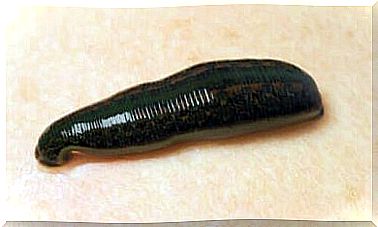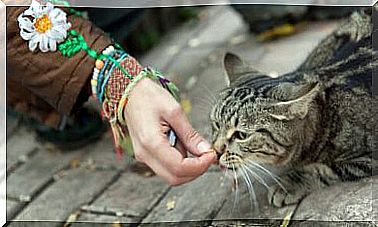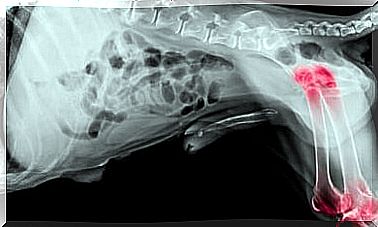Porpita Porpita, The Blue Button Jellyfish
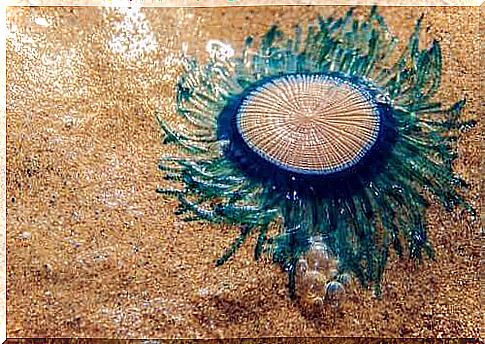
The blue button jellyfish, better known as porpita porpita , is a brightly colored vortex that, despite its name, is not a jellyfish. But how does this confusion come about? Read on below to find out more about this fascinating animal.
Porpita porpita – The blue button jellyfish
The porpita porpita is called the “blue button jellyfish”, although it is not a jellyfish at all. It belongs to the hydrozoan family and is part of a colony of hydroids.
Porpita porpita is organized in a similar way to the Velella species. Because it is also a pelagic organism that swims on or near the surface of the sea.
This species has a large number of tentacles and about an inch (2.5 cm) in diameter when the float is shallow. The tentacles have a translucent blue color, while the edge is dark blue.
An individual’s body is made up of two parts, the float and the hydroid colony. Therefore, the float of the porpita porpita is round and almost flat with a golden brown color.
As for the color of the hydroid colony, it varies from a shade of yellow to a light turquoise blue. This hydroid colony resembles tentacles like those of the jellyfish.
Each of these “tentacles” has numerous branches. And at the tip of these branches are stinging cells that contain poison, called nematocysts.
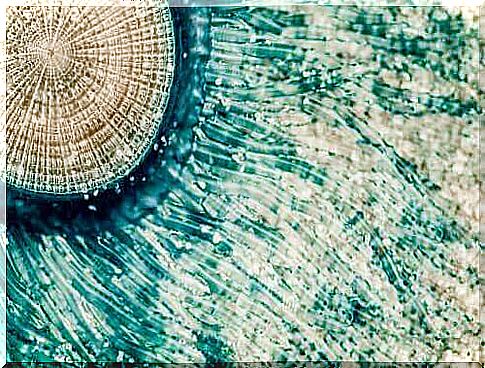
distribution and habitat
The blue button jellyfish occurs in the North Atlantic as well as in the western and eastern Mediterranean. It prefers the temperate waters that stretch from Europe to the Gulf of Mexico and the southern United States.
Although this creature usually lives on the surface of the ocean, it can sometimes get as far as the coast. For this reason, they have already been spotted by bathers on beaches or in coastal areas.
Diet and reproduction of the blue button jellyfish
The blue button jellyfish is a passive organism that moves with the ocean currents. However, it competes for food with other small passive organisms.
They usually eat small crustaceans that are part of plankton and crustacean larvae. Their mouths have a dual function – to take in food and remove waste.
Their reproduction is one thing worth mentioning as they are hermaphrodites, that is, they have both male and female reproductive organs .
Therefore, they release eggs and sperm during fertilization. The first step is transformation into larvae and then into polyps.
Once the polyp has developed, it joins the hydroid colony that makes up the individual. In itself, the colony is formed by the union of newly emerging polyps that divide to form new polyps.
Interesting facts about Porpita porpita, the blue button jellyfish
The sting of a blue button jellyfish is not overly harmful to humans, but it is irritating. Hence, it is best to avoid contact with this creature.
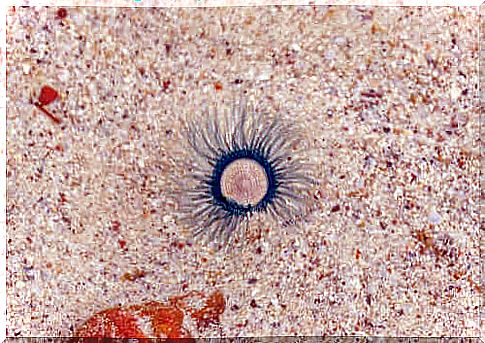
Jellyfish store their poison in cells that are located in the tentacles and are known as “nettle cells”. These stinging cells, also known as “nematocysts”, are used to catch prey or as a defensive tactic.
When a jellyfish stings a person, it usually just causes skin irritation. But what is the best way to proceed after a sting by this jellyfish?
First of all, you should avoid removing the tentacles with your bare hands. Instead, you’ll need to cover your hands when removing tentacles and other possible fragments.
It is best to use warm sea water or sand to relieve the pain of the sting. You can also use cold compresses and alternate them with vinegar or lemon compresses.
If you are near a beach aid center, go there as the local staff will know how to handle a jellyfish sting. Be careful not to use alcohol, urine, fresh water, or hot water.
The sea is home to many strange creatures such as the blue button jellyfish; another reason to care about our planet’s oceans and keep them as clean as possible.


